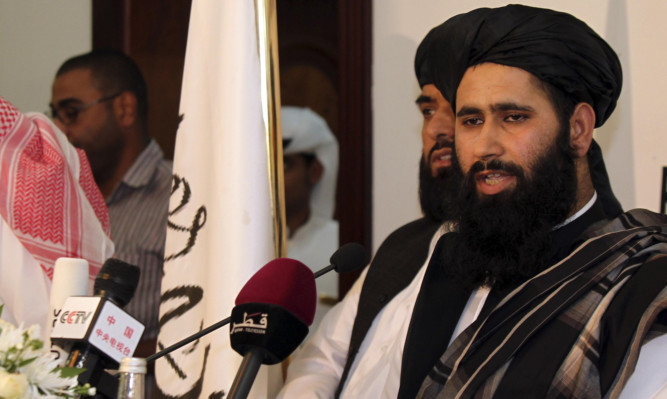After nearly 12 years of death and destruction, the Taliban and the US are to hold talks on finding a political solution to end the war in Afghanistan.
Sources in the Obama administration said a Taliban office to be opened in the Qatari capital of Doha was the first step toward the goal of a full Taliban renouncement of links with al Qaida. Formal meetings will begin within days.
The decision was a reversal of months of failed efforts to start peace talks while Taliban militants intensified a campaign targeting urban centres and government installations.
In Doha a Taliban spokesman said the Taliban are willing to use all legal means to end what they called the occupation of Afghanistan.
The Obama officials said the US and Taliban representatives will hold bilateral meetings, and Afghan president Hamid Karzai’s High Peace Council is expected to follow up with its own talks a few days later.
They acknowledged the process will be “complex, long and messy” because of the ongoing level of distrust between the parties.
They said that ultimately the Taliban must also break ties with al Qaida, end violence and accept Afghanistan’s constitution including protection for women and minorities.
Officials said Mr Obama was personally involved in working with Mr Karzai to enable the opening of the office, and that US Secretary of State John Kerry had also played a major role.
The Taliban have refused to speak to the government or the Peace Council, set up by Mr Karzai three years ago, because they considered them to be American “puppets”.
Taliban representatives have instead talked to American and other Western officials in Doha and other places, mostly in Europe.
“We don’t have any immediate preconditions for talks between the Afghan peace council and the Taliban, but we have principles laid down,” Mr Karzai said, adding that they include bringing an end to violence and the movement of talks to Afghanistan so they are not exploited by other countries.
The announcements came on the day that Afghan forces took the lead from the Nato coalition for security nationwide, opening the way for the full withdrawal of most foreign troops in 18 months
The top US commander in Afghanistan, General Joseph Dunford, said the only way to end the war was through a political solution.
“My perspective has always been that this war is going to have to end with political reconciliation, and so I frankly would be supportive of any positive movement in terms of reconciliation particularly an Afghan led and an Afghan owned process that would bring reconciliation between the Afghan people and the Taliban in the context of the Afghan constitution,” he said as reports were breaking that the Taliban were about to open an office.
For foreign combat troops on the ground, the transition means they will not be directly carrying the fight to the insurgency, but will advise and back up as needed with air support and medical evacuations.
The transition also comes at a time when violence is at levels matching the worst in 12 years, fuelling some Afghans’ concerns that their forces are not ready.
Karzai said that in the coming months, coalition forces will gradually withdraw from Afghanistan’s provinces as the country’s security forces replace them.
